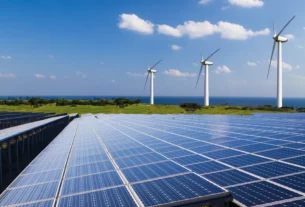In Short : The Solar Power Central Pool and Solar–Wind Hybrid Central Pool have been dissolved by India’s dismantling of its Uniform Renewable Energy Tariff (URET) mechanism. Developers had cautioned that many renewable projects’ Power Sale Agreements (PSAs) were being delayed by three-year fixed tariffs. Accelerated transactions, less stranded clean energy capacity, and a renewed push for solar and hybrid system deployment are the goals of the change.
What’s Changing and Why It’s Important
The URET framework, which was launched in February 2024, provided stable prices for both solar and hybrid projects by offering standardized tariffs to protect purchasers from price swings. However, in the face of rapidly declining tariffs, many buyers—including state agencies and distribution companies—were reluctant to sign PSAs under fixed terms. Due to stalled deals, this hesitancy contributed to the stranding of more than 50 GW of approved renewable capacity.
The Ministry of Power hopes to clear the backlog and expedite the deployment of clean energy by rescinding the URET order (dated August 1, 2025). Renewable Energy Implementation Agencies (REIAs) are now able to sign PSAs directly with developers and buyers, bringing in a more flexible, market-driven process while maintaining the validity of previous bids and Letters of Award under the URET regime.
Strategic Consequences for the Development of Solar and Storage
Price Flexibility & Deal Velocity: By removing tariff rigidity, the action allows for price discovery that is in line with the current prices of hybrid systems, solar panels, and storage. This adaptability can promote integration with solar system drawing-guided infrastructure design and rekindle investor interest in solar-heavy assets.
Unblocking Stranded Projects: With more than 50 GW of solar and wind capacity stalled, this policy change improves deployment prospects, especially for systems that combine energy storage and renewable generation, which are essential for sustainable growth and grid stability.
Investor Sentiment & Market Dynamics: Improved liquidity and financing terms for technologies like solar energy and solar-plus-battery systems may help boost investor confidence in renewables. A more flexible pricing regime is also likely to have this effect. Broader indicators like the performance of the solar industry’s share price may show this.
A Wider Perspective: Moving Toward Sustainable Development
India’s renewable market has matured with the shift from fixed to flexible pricing models. It places a strong emphasis on competition, public-private cooperation, and faith in renewable resources. In order to reduce reliance on non-renewable resources, improve energy access, and maintain sustainable development standards, the policy supports expedited project execution and customized contract terms.
The Bottom Line
A significant change in India’s clean energy strategy from centralized control to dynamic, market-responsive frameworks is represented by the dissolution of central tariff pools. In order to meet India’s 500 GW non-fossil energy target by 2030, this policy realignment opens the door for quicker deployment, more innovative solar integration, and a more assured clean energy investor ecosystem.




